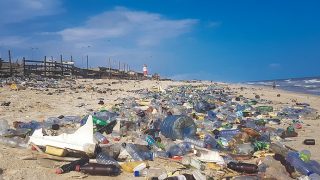New Zealand: Study shows dangerously high level of airborne microplastic pollution in Auckland

by Karen Faulkner, Worthy News Correspondent
(Worthy News) – A new study shows that the number of microplastic particles polluting the air in New Zealand’s city of Auckland is the equivalent to more than three million plastic bottles per year, the University of Auckland (UOA) reports.
The issue is a major concern as nanoplastics, the smallest airborne particles, may be able to cross the human blood-brain barrier and build up in vital organs, including the liver and brain.
Conducted by researchers at the University of Auckland and published in Environmental Science & Technology, the study shows that 74 metric tonnes of microplastics fall out of the atmosphere and onto Auckland every year.
The major microplastic substances found in Auckland’s air were polyethylene, polycarbonate, and polyethylene terephthalate: these are plastics used in packaging, electronics, and construction industries.
Notably, the Auckland research suggests that airborne microplastics in other cities worldwide may have been seriously undercounted up to now: the methods used to calculate the levels of microplastics in London, Hamburg, and Paris in recent years were not as sophisticated as those used to analyze particles as tiny as 0.01 of a millimeter in Auckland, UOA reports.
The average number of airborne microplastics detected in a square meter in a day in Auckland was found to be 4,885, compared with studies showing 771 in London (2020), 275 in Hamburg in (2019), and 110 in Paris (2016), UOA said.
The study’s lead author, Dr Joel Rindelaub of the UOA School of Chemical Sciences, said, “Future work needs to quantify exactly how much plastic we are breathing in. It’s becoming more and more clear that this is an important route of exposure. The smaller the size ranges we looked at, the more microplastics we saw. This is notable because the smallest sizes are the most toxicologically relevant.”
